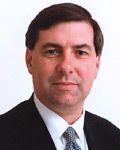Article
Activities turn research into treatment
The most important advance in refractive surgery in 2010 that is being touted by surgeons is femtosecond technology for laser cataract surgery and the creation of LASIK flaps.

And an avalanche of new dry eye, anti-allergy, anti-inflammatory, and anti-viral medications entered the marketplace. Three surgeons who are specialists in refractive surgery, cornea, and cataract weighed in on the year's developments as they apply to refractive outcomes.

Dr. Donnenfeld is using the iFS femtosecond laser (Abbott Medical Optics [AMO]) to create oval LASIK flaps.
"For the first time, we can customize our flaps in a manner similar to customized ablations," he said. "We can make reverse side cuts that give added stability, reduce the risk of dry eye, and improve the refractive accuracy."
Dr. Donnenfeld is a founding partner of Ophthalmic Consultants of Long Island and Connecticut, clinical professor of ophthalmology, New York University Medical Center, New York, and a trustee of Dartmouth Medical School.

"We are seeing from data presented at the American Academy of Ophthalmology [AAO] meeting that we have the ability to make very controlled incisions and capsulotomies," he said. "The ability to ease the removal of the nucleus is going to be a great advance in cataract surgery. This technology will also, I believe, help in the development of new IOLs, potentially IOLs to correct presbyopia, by controlling the size and the shape of the capsulotomy."
Dr. Hersh is director, Cornea and Laser Eye Institute-Hersh Vision Group, clinical professor of ophthalmology, and chief, Cornea and Refractive Surgery, University of Medicine and Dentistry-New Jersey Medical School, Newark, NJ.
Marguerite McDonald, MD, also pointed to the continuing buzz surrounding femtosecond laser technology as it is applied to LASIK.




